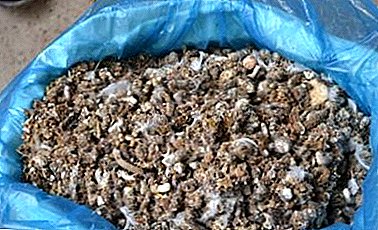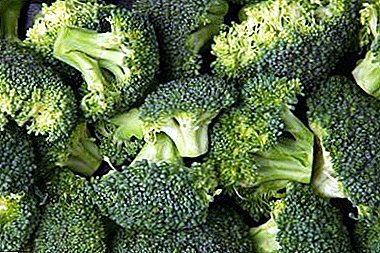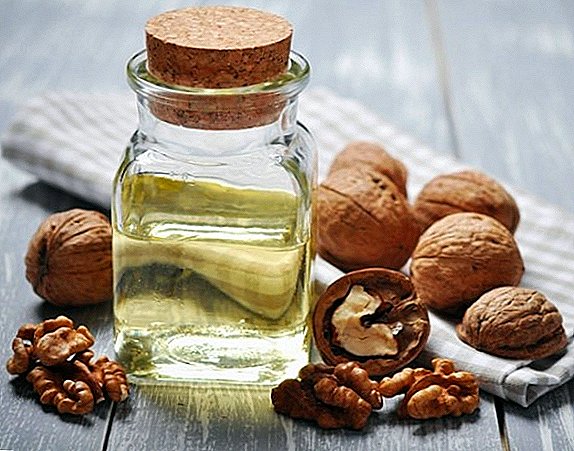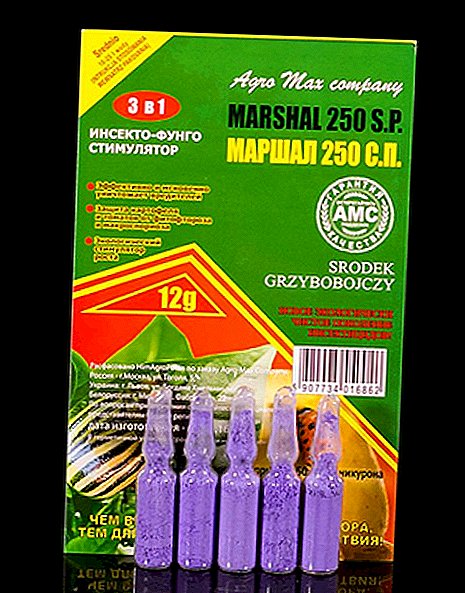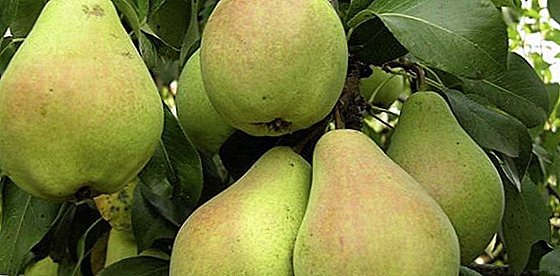 Modern food products have the ability to persist in certain conditions for almost arbitrarily long. This became possible thanks to special substances called preservatives, which are now added to almost all products of the food industry. However, there is a certain segment of products that do not tolerate mixing with preservatives and their shelf life remains quite limited. This article focuses on one of these products - milk, and the process that occurs with it as a result of the inability to expose it to the proper degree of preservation - folding.
Modern food products have the ability to persist in certain conditions for almost arbitrarily long. This became possible thanks to special substances called preservatives, which are now added to almost all products of the food industry. However, there is a certain segment of products that do not tolerate mixing with preservatives and their shelf life remains quite limited. This article focuses on one of these products - milk, and the process that occurs with it as a result of the inability to expose it to the proper degree of preservation - folding.
What is coagulated milk
For a better understanding of the processes leading to the folding of milk, you must first deal with the issue of the device of protein molecules, which form in the main mass most of the organoleptic qualities of this product.
Find out what cow's milk is made of, how it is useful, how it is processed, how it differs from goat milk.
The three main proteins in any dairy product are lactoglobulin, lactalbumin and casein. Like molecules of any other protein, in their structure they resemble a chain of spiral configuration.
There are two processes that lead to a change in the native properties of a protein — denaturation and destruction. In this case, denaturation precedes and facilitates the further process of destruction.

During denaturation protein changes its natural indicators. It changes its taste, smell, color, it may begin to show fundamentally different chemical properties, but the structure of its molecules remains unchanged.
During the destruction the complete destruction of the usual structure of molecules occurs, leading to the formation of completely new chemical substances in their structure. The process of denaturation is reversible in some cases, while the destruction is a final and irrevocable process.
Did you know? Milk produced by female seals and whales produces the largest amount of fat (45-50%), while donkeys and horses give the least fat milk (1-1.5%).If we transfer all the above information to the specific case under consideration, it turns out that the milk subjected to denaturation is a sour product, and the curd milk is a product whose protein component has passed through the process of destruction.
By its organoleptic properties it is a liquid with several different levels. The upper one, which is more liquid and transparent, is popularly referred to as whey: basically it is water and a small amount of proteins that retain the primary structure. The bottom layer is quite dense and thick - these are individual amino acids, as well as fats and carbohydrates. 
At what temperature does it turn off
For the most part, the process of destruction of any protein molecules, especially those that have already begun to lose their native properties, can be provoked by almost any catalyst of a chemical or physical nature.
For example, if you drop vinegar or citric acid in milk, it also starts to curl. However, the traditional and most frequent method of achieving a coagulation condition in a product is to warm it up.
Did you know? Over the year, around the globe, domestic cows produce an average of 400 million tons of milk.The temperature required to start and successfully complete the process of protein degradation varies considerably depending on many parameters. For example, on the degree of pre-denaturation, quantitative indicators of protein in the primary fluid, the presence or absence of other chemical impurities (primarily preservatives) in the product, and many others. However, practice shows that on average, at a temperature of + 95-100 ° C, milk coagulates within 30-40 seconds.
 Milk can curl if you drop it with citric acid or vinegar.
Milk can curl if you drop it with citric acid or vinegar.It is also possible that your dairy product will be curtailed at a lower positive temperature (from +50 ° C), but in this case it will be necessary so that the protein contained in it is already at a certain stage of denaturation. In addition, the protein structures of dairy products lose their original structure and as a result of exposure to extremely low temperatures (from -60 ° C).
Find out what is colostrum and kefir fungus.
Milk coagulated by boiling
It often happens that the milk purchased in a store or on the market is curtailed during its heat treatment. However, do not rush to throw away the product, because, despite its inconspicuous appearance and seeming uselessness, it can still be successfully applied in your kitchen.
Below we discuss the main reasons for the process of folding milk during boiling, as well as methods for its application.
Why
The main reason for the fact that any products containing protein, including dairy, change their structure over time, is the specific chemical structure of protein molecules. By their chemical nature, unlike fats or carbohydrates, they cannot preserve their native properties for a long period of time.  And the process of raising the temperature of the environment in which they are located only accelerates the natural course of things. However, there are a number of reasons due to which the folding process occurs at a lower temperature or in a shorter period of time exposed to high temperature.
And the process of raising the temperature of the environment in which they are located only accelerates the natural course of things. However, there are a number of reasons due to which the folding process occurs at a lower temperature or in a shorter period of time exposed to high temperature.
Important! If you want to prevent the process of rolling up the milk when it is boiled, we recommend that you closely monitor the process in order to interrupt it exactly at the moment when it just starts to boil.
These are the reasons:
- your dairy product was already acidified, that is, the process of denaturation has already begun in it (sometimes there is enough of such a degree of denaturation that it cannot be detected by human senses);
- you got the milk mixed from different yields, one of which has already begun to denature;
- the cow that gave the milk you bought has hidden mastitis or some other disease;
- milk has not undergone sufficient pasteurisation;
- Catalysts (substances that change the rate of flow of any chemical reactions), for example, soda, vinegar or citric acid, are found in your product.

What can you cook out of it
The best dish that can be made from the bottom, dense layer of coagulated milk is cottage cheese. For its preparation, it is necessary to collect the mass accumulated at the bottom of the container with the product, and then, placing it beforehand in gauze or other fabric that has a sufficient number of pores, subject it to additional compression (for example, using a brick or a vice set on top).
Dense mass can also be used as a basis for preparing a variety of hard cheeses, but this process is associated with a large number of technological difficulties, so it is not so easy to organize it at home.
Find out why milk tastes bitter, there is blood in the milk, milk has an unpleasant smell.Serum, a more watery and liquid layer of coagulated milk, is most often used as an ingredient for preparing various homemade pastries - charlotte, pancakes, fritters, pies, etc. The dough prepared using whey usually has a more delicate and pleasant taste than dairy, since it practically does not contain various fats and milk carbohydrates, which prevent the taste of other baking ingredients from being properly disclosed.
In addition, homemade yogurts, kefir and dairy desserts are obtained from a dense layer of coagulated dairy products. For their preparation, it is necessary to add lactic acid starter to the separated lower layer of your product, which is designed to increase the amount of lactobacilli contained in the mass and enhance their activity. Serum is also sometimes used to prepare some soft drinks using herbs and water infusions, such as airan.
Video: what to do when folding milk in porridge
Important! If you intend to get the coagulated milk on purpose, then it is not necessary to boil it - just drop a few drops of citric acid in a container with a fresh product.
Why milk can not curd when cooking cheese
In the process of making homemade cheese or cottage cheese, sometimes a situation may arise when the dairy product you have bought does not want to be rolled up. This condition is usually more characteristic of store milk.
The described phenomenon can be found several explanations, a list of the most likely of which we provide further:
- You have purchased milk that contains very little protein. It could probably be diluted with water.
- The milk you purchased was under the influence of extremely low temperatures, as a result of which its protein molecules underwent destruction while maintaining their natural external properties.
- Too fresh product is very poorly folded due to insufficient pre-denaturation.
- You have purchased for your needs a product that has a high degree of pasteurization, which almost completely excludes the presence of a variety of bacteria in it, and hence the development of a preliminary process of denaturation, which facilitates the subsequent folding.
- The milk that you purchased was pasteurized at too high a pressure or temperature, which disrupts the natural structure of the protein molecules while retaining its native external properties and reduces the likelihood of further folding.
- You are trying to make cheese under unsuitable environmental conditions. For example, do not bring the temperature to the required mark, do not use a sufficient number of other catalysts for destruction, try to achieve the folding process in the wrong container (aluminum containers, stainless steel tanks).
Why does not sour milk bought in the store: video
What to add to milk, so it curled, not sour
As already mentioned, it is possible to achieve the onset of the process of destruction of milk protein molecules without the use of high temperatures, mainly with the help of other catalysts, mainly of chemical nature.
Other physical methods of producing coagulated milk are the use of very high pressure for short periods, as well as a simple long wait, during which destruction will occur through the natural process of denaturation.
Among the chemicals most often used to obtain coagulated dairy products, it is necessary to allocate primarily citric acid and leaven. Both of these substances are good in that they practically do not affect the taste, smell and color of the product obtained after their use.
Learn about the fat content and density of milk, the definition of water in milk.Table vinegar, soda and any other acids and alkalis can also be added to milk, but the product obtained after their use will have slightly less pleasant organoleptic properties.
So, we hope that our article has helped you answer all the questions about coagulated milk. Many culinary experts around the world successfully use this product in their kitchens, achieving truly amazing results.
Reviews

I need to change the saucepan, of course! I cook porridge from time to time, I have never curdled milk, I use it from barrels and home-made cow and in soft packs, I try not to take it in a tetrapack, it is pasteurized, which means "dead."



